Making Histories
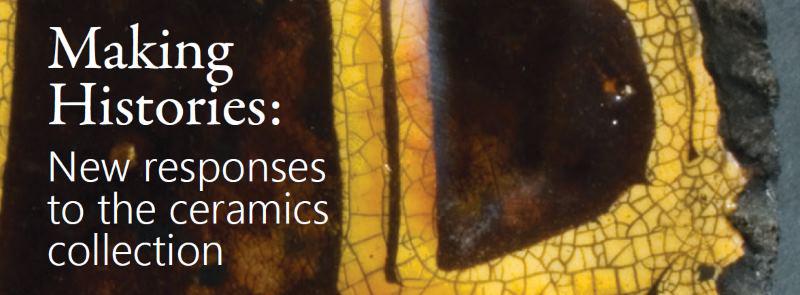
For subtitles, click the 'Subtitles / Closed Caption (c)' button when you hover over / tap the YouTube video.
You can also download a large text version of the interpretation labels here.
This webpage accompanies our exhibition Making Histories. Seven ceramic artists from across the Midlands were invited to select and respond to objects from the ceramics collection at Leamington Spa Art Gallery & Museum. The artists all draw on ceramic traditions in their work, and their selections showcase some of the strengths and surprises of this diverse collection.
Ceramics link us across great distances of time and space. Humans have been using pottery for millennia, and fired clay has an extraordinary ability to preserve the traces of its making. Seeing a thumbprint on the rim of a prehistoric cooking pot, or the splashes of glaze on a medieval jug, it is easy to imagine ourselves in the potter’s place.
Many contemporary ceramicists see their work as part of a long tradition.They are in dialogue with the makers of the past, expressing new ideas through shared materials and techniques. For this exhibition, Rupert Brakspear has taken inspiration from ancient Roman pottery, and from Warwickshire’s landscapes and geology. Dylan Bowen’s slipware draws on the robust forms and luscious glazes of vernacular English pottery. Rose Wallace uses Staffordshire tortoiseshell wares and figurines to illuminate the social and medical history of the Royal Pump Rooms. Michelle Taylor reflects on themes of damage and repair, both physical and emotional, through intricate recreations of traditional blue and white decoration. Jon Williams invites us to make music using vessels and water, as people did in pre-Columbian Peru. John Wheeldon’s work responds to the lively painted surfaces of Delft pottery. Rhian Malin explores the formal elegance of porcelain, its journeys from Asia to Europe and its meanings in the domestic interior.
Through all these artworks, Making Histories aims to shed new light on the collection, and to show how the history of ceramics continues to inform contemporary practice of the highest quality.
For subtitles, click the 'Subtitles / Closed Caption (c)' button when you hover over / tap the YouTube video.
1. Rupert Brakspear: Roman Pottery and Local Landscapes
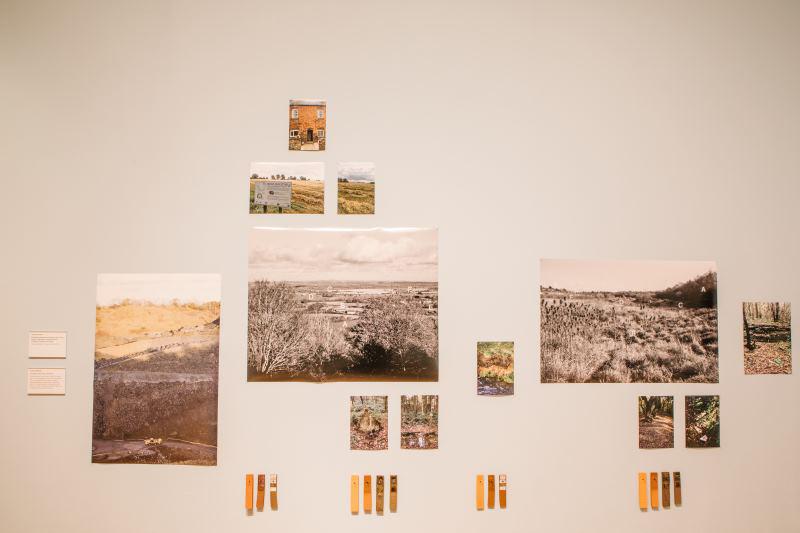
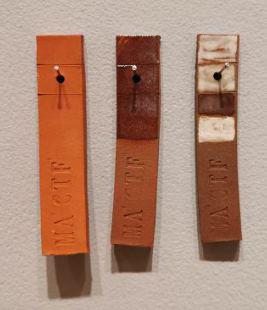
My work often brings me to places where ceramic production has vanished from the landscape, but where I can take a shaving of clay from a ditch or bank, gather ashes from a fire, and rock dust from quarries or cliff faces. I have chosen to respond to a mortarium, a Roman mixing vessel which has made me think of the importance of mixing more widely – culture, food, people...
2. Dylan Bowen: Early Modern Slipware
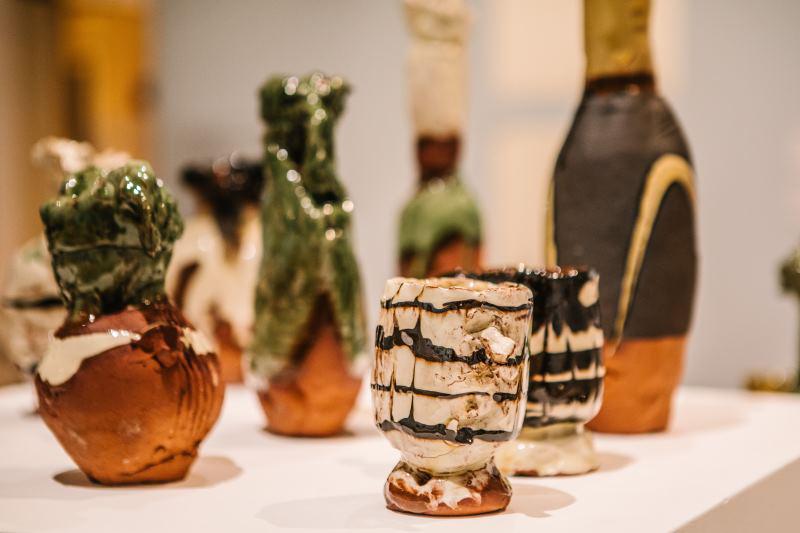
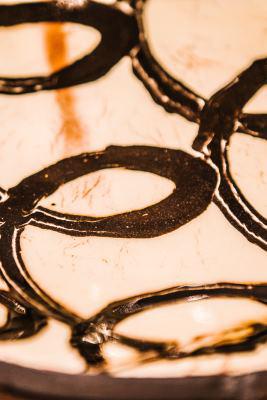
I see my work as having its roots in traditional, functional slipwares from the 17th and 18th centuries. They were made fast and loose for everyday use; their energy, vibrancy and expressive wildness seem vital and contemporary. The best work has some kind of muddy anarchy that resonates with me – especially growing up in the late 1970s, it connects with my other formative influences.
3. Rose Wallace: Staffordshire pottery and the Royal Pump Rooms
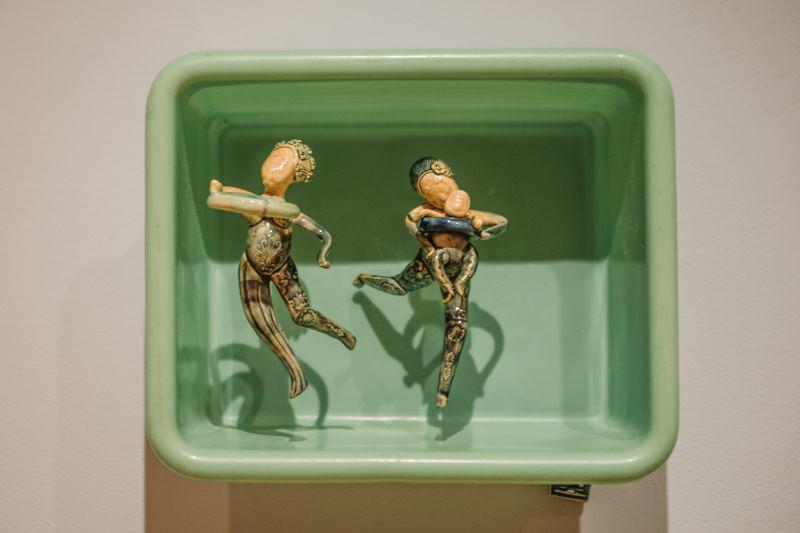
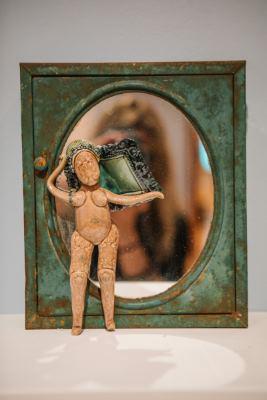
Encompassing the themes of ‘water’ and ‘therapy’, I developed a new perspective on the history of the spa baths, the vestiges of their therapeutic role, and the ordinary people who benefited from their use. Like the historical examples, my figures have previously been mounted on an integral base. Viewing the figure through the medium of water was an epiphany for me: afloat, they are encapsulated forever in the fluidity of suspended movement.
4. Michelle Taylor: Blue and White, Repair and Remaking
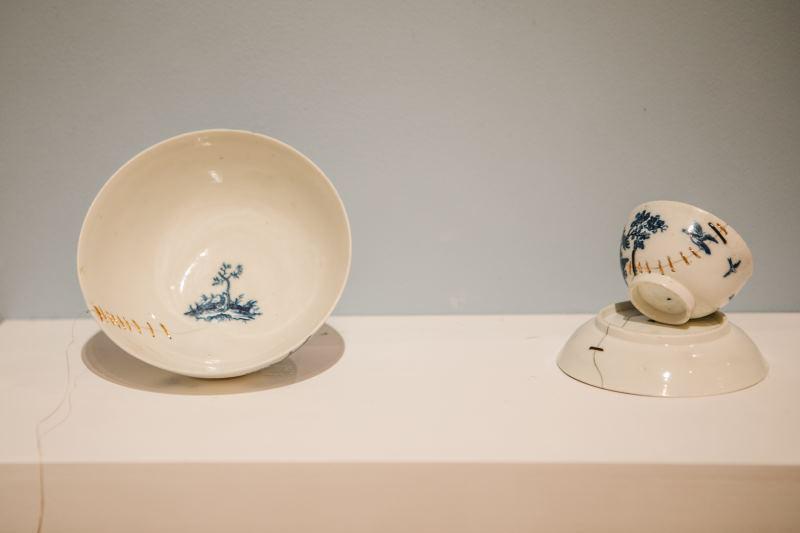
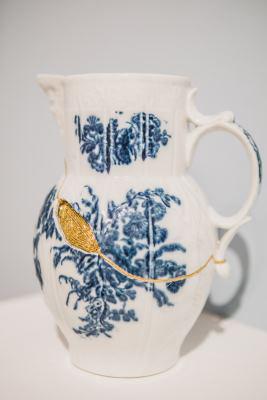
I take inspiration from abandoned, damaged and discarded wares. I was particularly drawn to the idea that these objects had been gifted to the museum and were once owned and valued by someone. I am fascinated by the detail and precision of historical repairs, and how emotional attachment can be created with inanimate objects; how they can become imbued with a physical presence, rich with personal meaning.
5. Jon Williams: Whistling Pots and Watering Pots
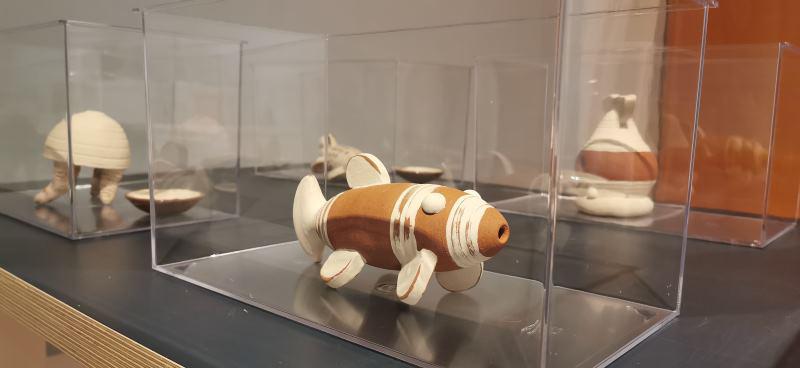
Playing with materials and process is vital to my making. My ceramics are designed to be interacted with and I love the notion of unorthodox function and learning through play. I made several prototypes and whilst experimenting in a bowl of water, I discovered a whole range of noises and effects could be created by dunking and lifting. I was transported to being a young child again, playing with toys in the bath.
6. John Wheeldon / Delftware and the Hammam
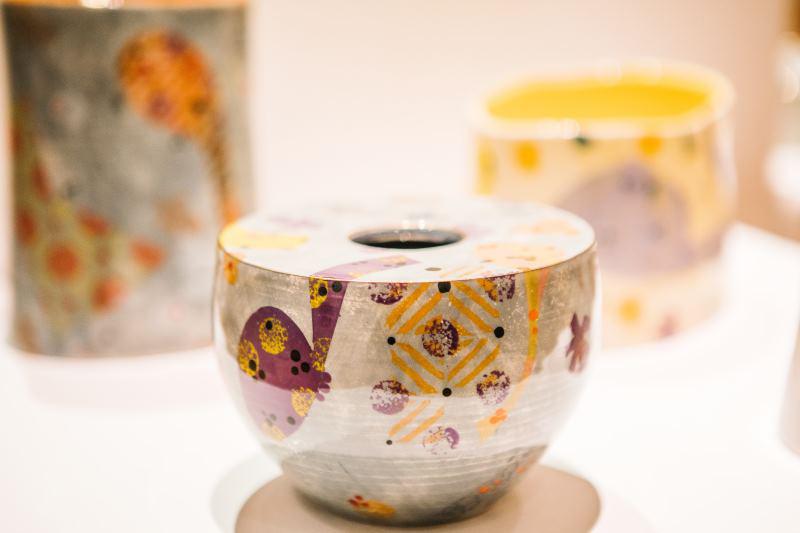
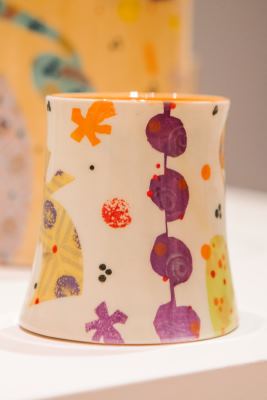
My work is based on seen or remembered images or objects, that are rendered as small painted shapes or drawings. I chose these particular objects from the collection mainly because of their shape or pattern. I was looking primarily for interesting outlines, and the shadows that they cast. I was also looking at the arches and brickwork in the building itself, manipulating the outlines into new abstracted shapes.
7. Rhian Malin: Porcelain
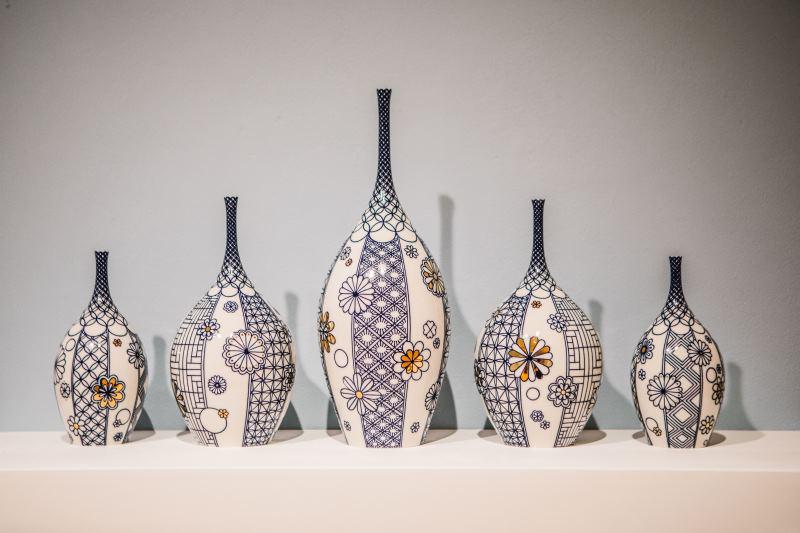
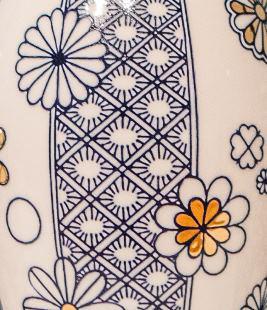
Ceramics have been part of everyday life for thousands of years, as utilitarian objects used for storing and cooking as well as being an artistic medium. No matter how much people know about art or design, most people will have a piece of ceramic in their home that they use every day, and it often gives people the same sense of nostalgia that I get from it. Whether they consider it art or not is another matter.
Tell a friend:




